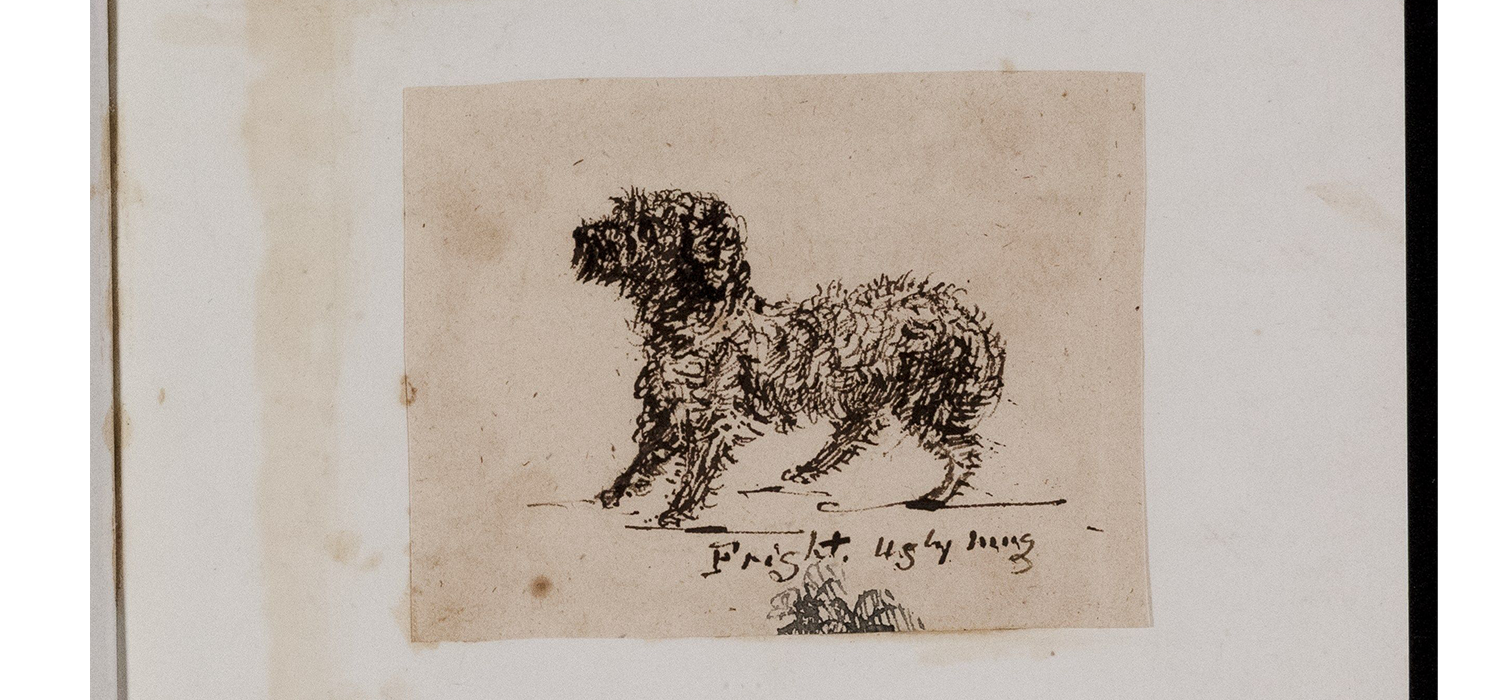Barking mad: a history of our love for canines
With a number of animal lovers at AM, it would be fair to say that it’s often the mention of pets in our collections that spark animated discussion. Our editorial team have shared some their personal highlights on man’s best friend from our collections.
'A Little Dog with a Big Bark'
If Interwar Culture tells us anything about dogs, it’s that we loved them just as much a century ago as we do now. Dog experts feature regularly in domestic and homemaking magazines of the twenties and thirties, offering breed profiles, breeding advice, and tips on the best guard dogs, gundogs, family favourites and ratters. Arthur Croxton Smith is one such expert, whose frequent appearances in Homes and Gardens never fail to betray his soft spot for all things canine. As a proud terrier owner myself, I’m particularly fond of a 1930 offering titled ‘A Little Dog with A Big Bark’, in which he explores the virtues of the mop-headed and ‘rather eccentric’ Dandie Dinmont. Croxton’s profile on this ‘deceptive little rascal’ is a delightful insight into the world of this interwar dog lover.
Lauren Clinch, Assistant Editor

‘A Little Dog with A Big Bark’, Homes and Gardens, Volume 11 - Issue 9 - Feb 1930
Fright’s adventures at sea
In 1847, one woman and her dog traversed the seas aboard the ship ASIA travelling for four months from England to South America. Elizabeth Hornby sailed on the ASIA during her father Rear-Admiral Sir Phipps Hornby’s tenure as Commander-in-Chief of the Pacific Station and brought her beloved companion Fright along for the journey. In the first pages of her journal, Elizabeth documents Fright’s strange first day aboard ship:
Fright has been introduced as Cabin dog and seems considerably puzzled to know where we have all got to. She is very indignant at their having the audacity to fire musketry and beat drums at sunset.
As their journey progresses, however, Fright soon finds her sea legs and even earns the fond respect of the crew for her talent for killing “a great many rats”. To read more of Fright’s adventures throughout Elizabeth’s journal, including her meeting with a monkey, see Travels in Europe, Asia and America, 1847-51, with numerous illustrations.
Courtney Priday, Assistant Editor

Sketch of Fright, Travels in Europe, Asia and America, 1847-51, with numerous illustrations, PHI/308
Man’s best friend
With bountiful insights into the everyday of human life, it should come as no surprise that the Mass Observation Project covers dogs again and again, including, but not limited to, the 2002 Autumn directive on Owning Pets. W1388’s response falls within what you would imagine from a cynophile, writing that he and his wife were dog lovers and that:
[a] home without a dog seems unimaginable and I can remember when we were first engaged deciding which type of dog we would have before deciding where we would live.
That sounds like a relationship goal to me! W1388 is a great advocate for owning a dog, and perfectly sums up why dogs truly are our best friends.
Sam Hutchinson, Editorial Assistant
[they] provide companionship, love and loyalty. There is always a friendly wag each morning [and]… always someone who will accept you as you are, warts and all, without reservation.
About the authors
Natalie Dale, Courtney Priday, Lauren Clinch and Sam Hutchinson are all in the editorial team at AM.
About the collections
PHI/308 from Life at Sea, Homes and Gardens, Vol 11, Issue 8 from Interwar Culture and W1388's response from Mass Observation Project are all open access for 30 days.
Recent posts

The blog highlights American Committee on Africa, module II's rich documentation of anti-apartheid activism, focusing on the National Peace Accord, global solidarity, and student-led divestment campaigns. It explores the pivotal role of universities, protests, and public education in pressuring institutions to divest from apartheid, shaping global attitudes toward social justice and reform.

This blog examines how primary sources can be used to trace the impact of young voices on society, particularly during pivotal voting reforms in the UK and the US. Explore materials that reveal insights into youth activism, intergenerational gaps, and societal perceptions, highlighting their interdisciplinary value for studying youth culture, activism, and girlhood across history.
